We’re going to finish our Dublin Bay tour with class! We’re in Dalkey, one of the most affluent areas of the city – not only a beautiful village but basked in history, surrounded by gorgeous views and full of great pubs and restaurants – some places on earth just have everything, don’t they!
As usual, we’ll go for a walk – but not a very long one. You’ll want time at the end to linger in the village a while…
(Before we set off, a word about the photos – I’m using a compilation so the overall effect may appear disjointed – blue skies mixed with grey and so on ….)
For several hundred years, Dalkey – not Dublin – was the main port on the east coast. Between the 12th and 16th centuries, large ships, unable to access Dublin due to silting and high winds, could however anchor safely in the deep waters of Dalkey Sound. Passengers and cargo were rowed ashore in longboats. Goods were either transferred to smaller boats or taken by road to Dublin. This trade necessitated security and defences and so a walled town was created and not one but seven tower houses, or castles, were built by local merchants to store and protect their goods before being moved to Dublin.
With the eventual development of more convenient trade routes, Dalkey’s era of prosperity dwindled, its castles became obsolete and the village fell pretty much to ruin.
It rose to prominence again with the excavation of Dalkey Quarry in 1816/1817. Granite was needed for the development of the asylum harbour in nearby Kingstown. Dalkey granite was located close to the surface and easily quarried. A truck railway was constructed to carry the stone from the quarry down as far as Kingstown.
While many quarrymen existed in primitive tents close to the excavations, others built small cottages, providing a boost to the fishing village and the local economy.
The harbour brought Dublin’s elite not only to Kingstown but further along the coast and fine villas began to appear overlooking the sea around Dalkey. These mansions intermingled with the more modest houses built by the city’s merchants.
The extension of the railway from Kingstown to Dalkey in the 1840’s accelerated the growth and Dalkey became one of the most desirable places to live in Ireland.
Nothing much has changed since then! A Dalkey address is very acceptable indeed!
The village centre is lovely, having thankfully retained many of its original 19th century structures. Most buildings on Castle Street would have served as shops with domestic accommodation on the upper floors. The variety of architectural styles and storey levels adds to its character and appeal.


Right here on Castle Street are the wonderful reminders of Dalkey’s medieval heritage. Two of the original seven castles have survived. Archbold’s Castle (named after the family of merchants who owned it in the 18th century) can just be admired from the outside but Goat Castle serves as the Town Hall and is home to a brilliant Heritage Centre.
A visit to the Heritage Centre will be well worth while if you’ve time… It covers the area’s history of course but the Writer’s Gallery features the works of famous Dalkey residents & visitors and you can also access the 10th century St. Begnet’s Church and graveyard where over 2000 burials in a very small space has resulted in a significant rise in ground level! All this plus great views from the battlements!
Begnet was a 7th century Irish princess. As a child, an Angel appeared to her and asked her to devote her life to the service of God. The Angel gave her a bracelet, marked with the sign of the cross, as a symbol of her vocation.
Her parents arranged her marriage to the son of the King of Norway. To avoid breaking her vow to the Angel, she left home, taking nothing but the bracelet. She became an abbess of nuns in Northumbria on England’s west coast, moving some years later to Cumberland.
After her death, the bracelet became an object of veneration. By the twelfth century, an oath sworn on the bracelet was accepted testimony – with perjury carrying the penalty of death!
Begnet’s association with Dalkey is unknown – She may have been local to the area or – most likely – missionaries may have founded the two churches in her name.


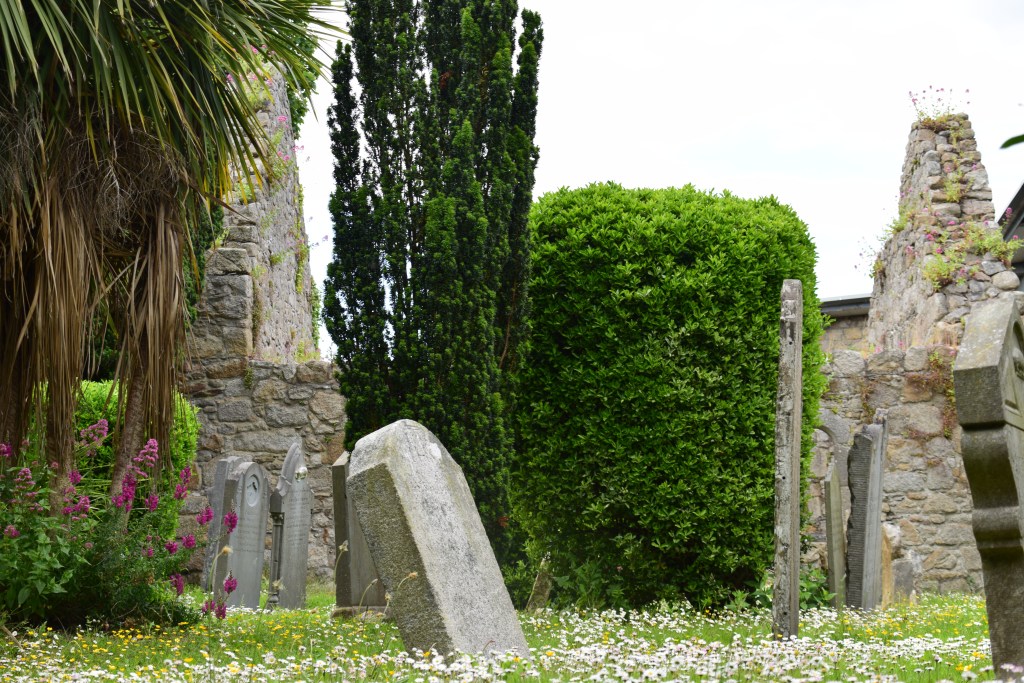
The Church of the Assumption was built c. 1841.

This was once the terminus of the Dalkey Tram Line – the original tram lines can still be seen turning in off Castle Street..


Beyond Castle Street, residential roads string out in every direction….
….from the terraces of modest quarrymen and fishermen’s cottages – many unaltered from the 19th century….

…. to larger, grander homes – many of these also retaining their 19th century features..
Dalkey’s granite wasn’t just used for the harbour of course. Most of the village was built with the local stone as well as the area’s Martello Towers and 2 small harbours we will see later on our walk. In the 1840s, stone from the quarry was exported to Newfoundland for the construction of the Basilica of St. John the Baptist in St. John’s. Quarrying continued on and off for decades, finally ending in 1917.
Today, apart from paths and steps, the quarry is not landscaped. Forested with gorse and brambles, the vegetation disguises its industrial past. It is home to plenty of wildlife including squirrels, butterflies, foxes, rabbits, Peregrine Falcons and wildflowers. .


The quarry has become one of the most popular rock climbing locations in Ireland, with over 350 routes,

This area is all now part of Killiney Hill Park. Its very popular with walkers and the hilltop path offers some of the finest views on the east coast (and even Mount Snowdon in Wales on a clear day!)…..
….looking back towards Dun Laoghaire and Dublin…..

….south towards Bray Head and County Wicklow……

….down towards Dalkey Island -we’ll be walking in that direction…..

There’s plenty to look at on the hilltop itself…..
This old signal tower was used by the British military to communicate to the Martello Towers built along the coast in preparation of an attack in the 19th century by Napoleon ( it never happened).

The Obelisk was commissioned in 1742 by the local landlord. The ‘Forgotten Famine’ of 1740/41 was caused by 2 bitterly cold winters and flooding which destroyed crops and livestock, resulting in the loss of over 250,000 lives. The obelisk was one of those famine relief projects offering employment to local families. It now stands as a monument to those lives lost.

The Pyramid, now behind gorse hedges, was built in 1852 by Robert Warren, the then owner of the land. Known locally as the Wishing Stone – a wish comes true by circling all levels of the pyramid, climbing to the uppermost pinnacle and making a wish while looking towards St. Begnet’s Church on Dalkey Island!

There’s a nice looped trail to follow – almost 3 kms in length….

These lands were once part of Killiney Castle estate. The castle became a hotel in the 1970’s.

Killiney Park opened in 1887 under the name Victoria Park in celebration of Queen Victoria’s 50th year on the throne.

This piece, just inside the Victoria Gate, is entitled Thus Daedalus Flew by Niall O’Neill. It honours the writer James Joyce, who named his literary alter ego Stephen Dedalus in his novels. It also refers to Daedalus, father of Icarus.

The beautifully maintained Holy Trinity Church boasts a stained glass window The Angel of Peace and Hope (1918) by Harry Clarke.
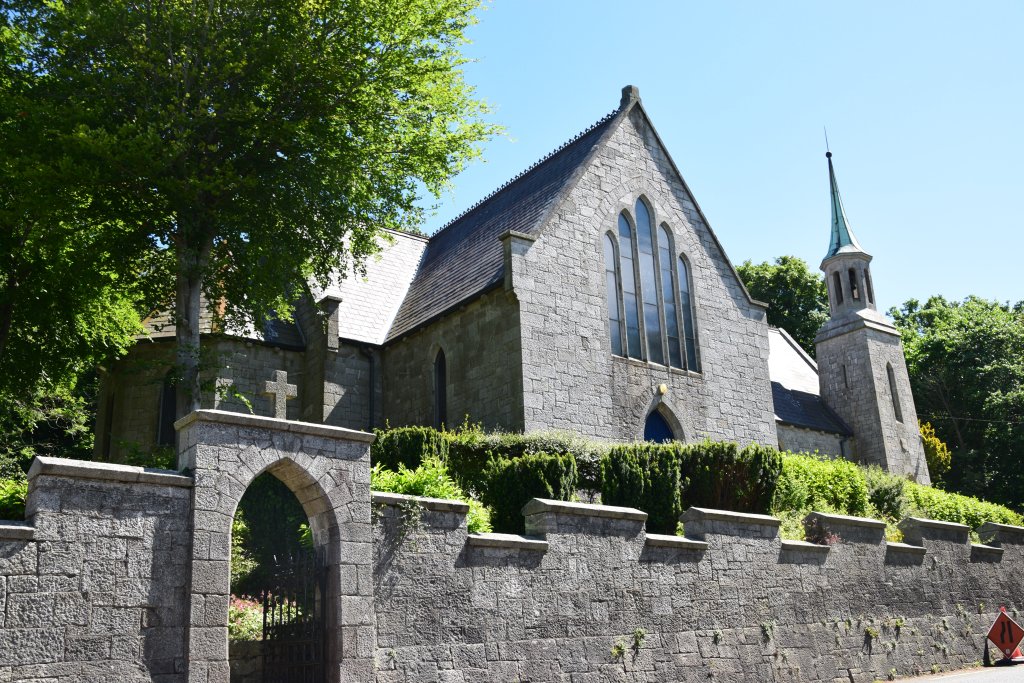
Not another Martello Tower says you!!
I’m only including this one because it’s a bit different from the rest in that it was actually built about a half kilometre from the sea. But, located up on a hill, it would still have served as a useful lookout post.
While many towers have disappeared due to development, this one has been beautifully restored – it even has a working cannon mounted on the roof! There is also a coach house, an artillery store, a tool shed, a gunner’s cottage and a gunpowder store. The tower is now privately owned but is sometimes open to the public (I’ve yet to get inside).
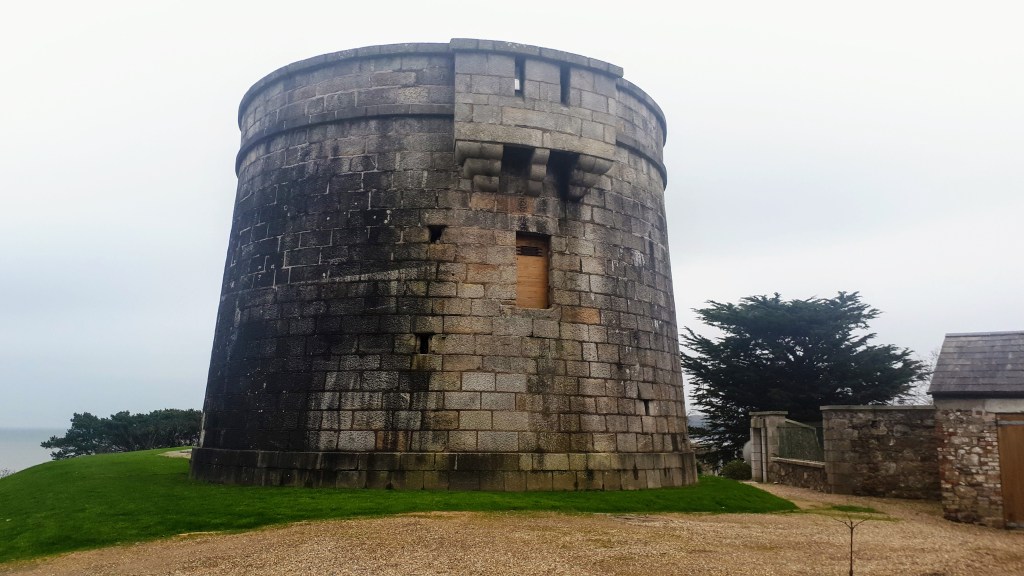
This old church and graveyard nestles among some very fine houses on the side of Killiney Hill. There has been a religious presence here since the 6th century. Léinín, a local chieftain, and his seven daughters converted to Christianity, and together they went on to found a monastic community on this spot. The oldest part of the church dates from the 11th century with an addition in the 16th century. The earliest gravestone found here dates from 1791.
Killiney was anglicised from Cill Iníon Léinín which translates as Church of the daughters of Léinín ( Cill = church / Iníon = daughters / Léinín = the chieftain’s name).

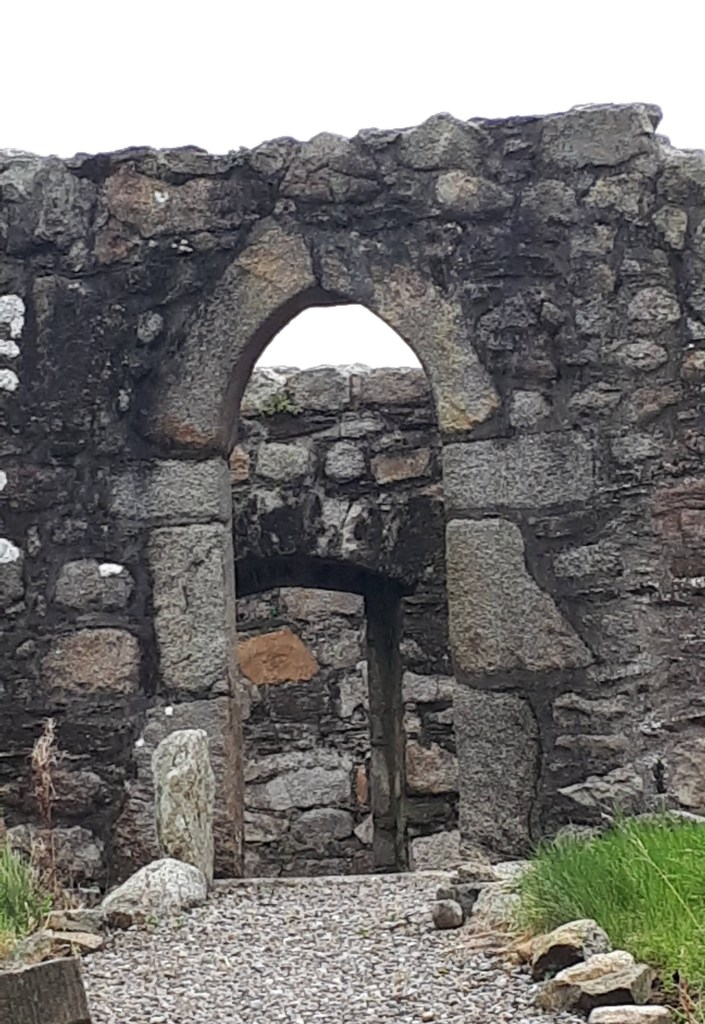
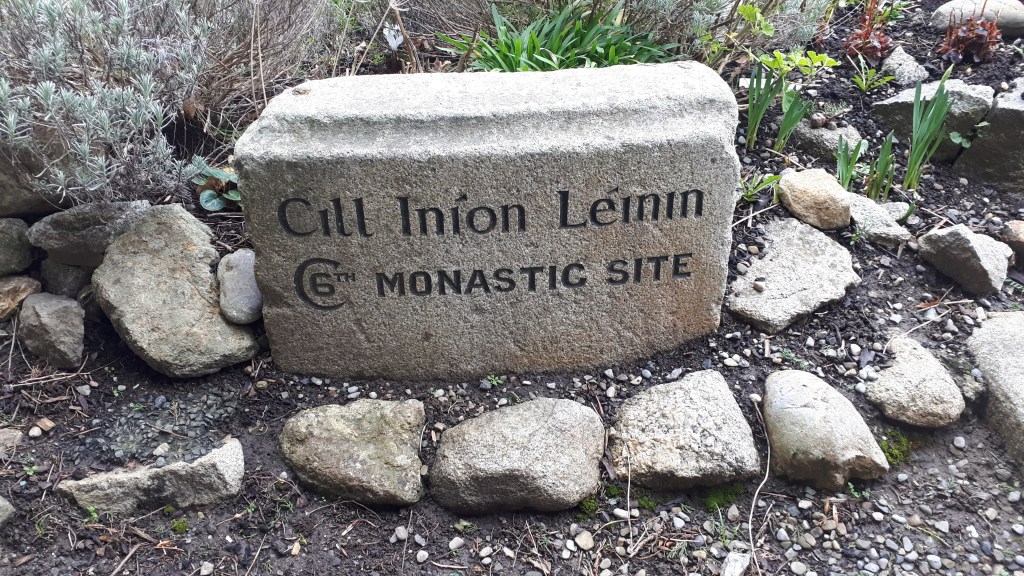
As we leave the hill we pass Victoria Castle. It was built by land owner Robert Warren in 1840 in commemoration of the accession of Queen Victoria a few years previously. It supposedly had a secret tunnel (since sealed up) leading down to Killiney Beach. At some stage it was badly damaged by fire but was restored in 1928 by the Power family (Power’s Whiskey) and renamed Ayesha castle after the goddess who rose from the flames in Rider Haggard’s novel She.
In 1997 it was bought by Irish music star Enya who renamed it Manderley Castle after the house in Daphne du Maurier’s Rebecca.

Enya is certainly not the only local celeb….. we’re constantly tripping over Ireland’s rich and famous around here! Bono (U2) lives just down the road as does his bandmate The Edge and director Neil Jordan. Van Morrison was here for a while as well as Lisa Stansfeld and Jim Kerr from Simple Minds. Damon Hill and Eddie Irvine represent the world of Formula One while playwright Hugh Leonard and novelist Maeve Binchy once held up the literary flag for the village!
Pierce Brosnan, Mel Gibson, Frances McDormand and her husband, director Joel Coen, have all rented in the area. The most recent celeb was Matt Damon who was stranded here for a while in 2020’s lockdown while shooting The Last Duel. He loved the village – calling it a ‘fairytale’.
To be fair to the locals, they generally leave their famous neighbours alone to wander about the place in peace. Indeed, they are even a bit protective of them and dislike seeing them being harassed or annoyed by reporters or selfie seekers.
Killiney Beach is a lovely long stretch of sand and stone facing the Irish Sea.
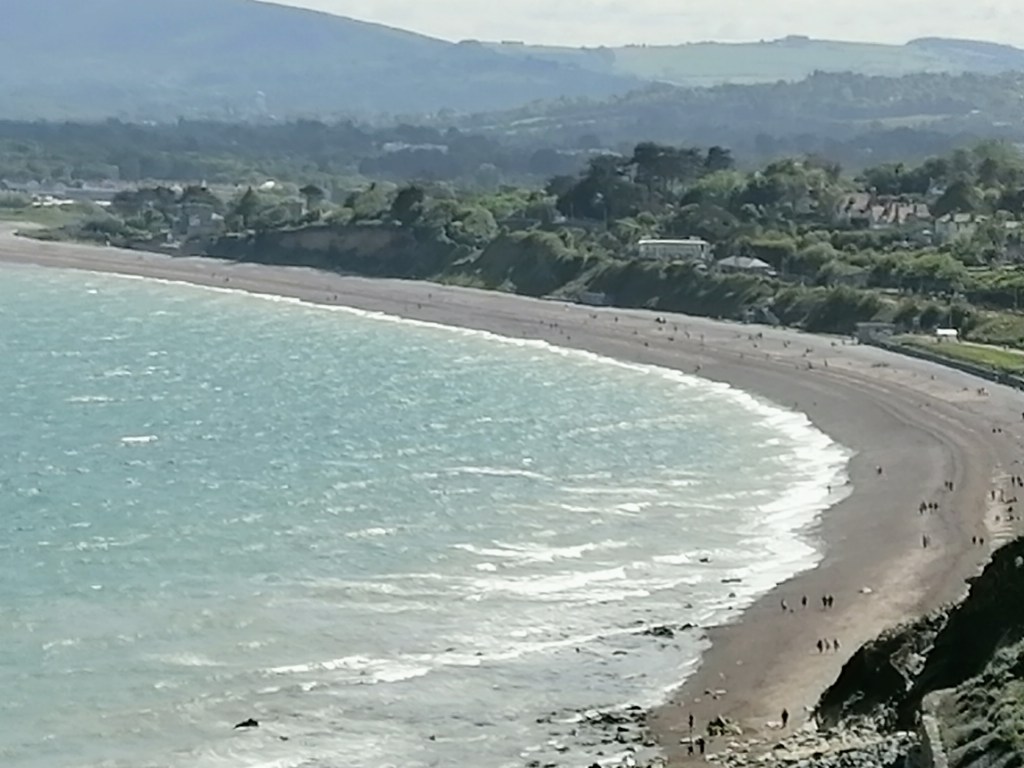

Up passed Bono’s house….I’m sure he’d invite us in if it weren’t for Covid!!!

We are now on the famous Vico Road heading back towards Dalkey Village. On our right is the railway between ourselves and the sea. Killiney Hill climbs upwards on our left.


There is some serious property along here! The historic villas with their incredible views will leave you drooling.

During the late 18th century, the Grand European Tour was the thing to do should your means allow it. Wealthy residents visited France and Italy and returned filled with wonder at the grandeur they had witnessed. Killiney Bay was likened to the Bay of Naples and house after house was given an Italianate name in its honour. This tradition has long survived around Dalkey so you’ll be forgiven if you feel as though you’ve been parachuted onto the Amalfi coast or Tuscany!
This is the Cat’s Ladder, a steep flight of steps leading back up to Dalkey Hill. At the top is Torca Cottage, where George Bernard Shaw lived for eight years of his youth around 1870. He was to later write ‘I lived on a hilltop with the most beautiful view in the world’.
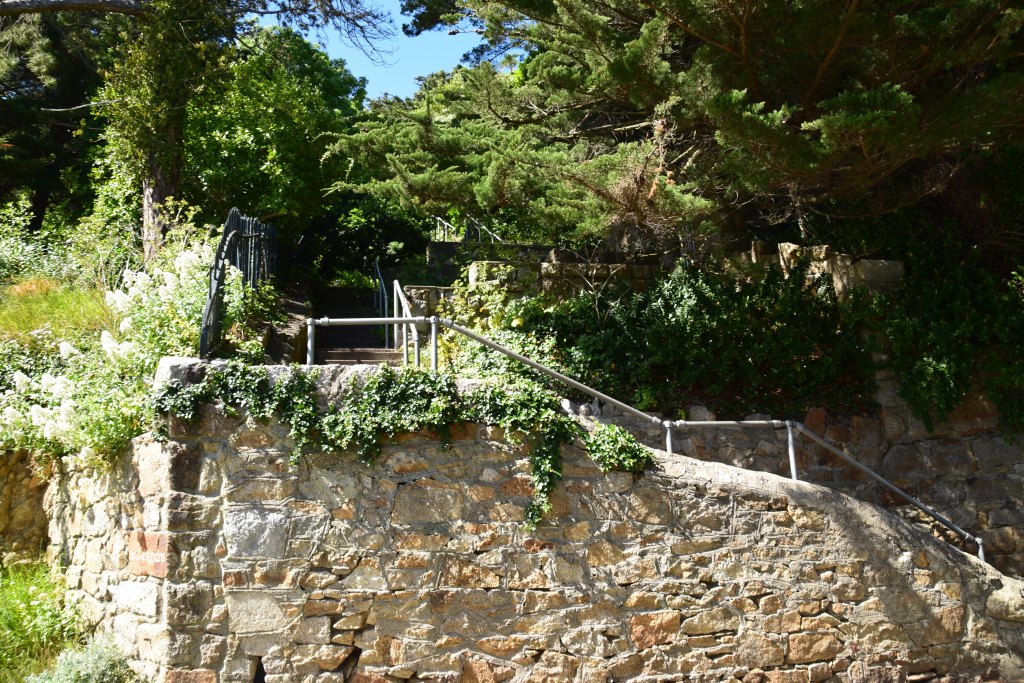


Below us are glimpses of swimmers who eschew Killiney beach in favour of the rocks…
Growing up, I can remember, off the top of my head, 6 hotels in the area – the only one left is Killiney Castle. Up there on the cliff stood the Khyber Pass – what a location! Built in 1855, it was demolished in 1990 and, as with the other 4, has been replaced by luxury apartments.

The historic Sorrento Terrace was built around 1845. The land was owned by the MacDonnell family who lived in Number 1 (who’s grounds included Sorrento Point) and sold the remaining houses for the princely sum of £1,000 each. Number 1 sold for €10.5 million in 2015.

Across the road from the terrace is the lovely little Sorrento Park. There are great views of the island from here….

Dalkey took its name from Dalkey Island. The original Irish name was Deilg Inis meaning Thorn Island. This was later changed to Deilg –ei by the Vikings, Dalk-ei by the Normans and finally anglicised to Dalkey.
Pronounced Daw-Key (never, ever pronounce the ‘l’ or everyone will know you’re a tourist!)
It may be unoccupied today but thanks to a supply of fresh water, Dalkey Island has known plenty of residents. It was home to some of the first Stone Age settlers on the east coast of Ireland. Excavations have revealed 5th and 6th century glass from Belgium and France, Viking settlement from around 800AD and an 11th Century silver coin from Normandy. There are signs that the island was once used for farming.
There are 3 buildings remaining – a Martello Tower, a battery and a church. The church dates back to the 7th century and, like the one in Dalkey village, was dedicated to Saint Begnet. It was partially re-modelled to house the builders of the Martello Tower.
Goats were put on the island to provide milk for soldiers garrisoned at the tower – and there have been goats there ever since! (a local group of volunteers keeps an eye on them). The island is also home to a colony of seals and is a great place for birdwatching.
The island is accessible by boat – there are trips from nearby Coliemore Harbour – and its a wonderful place to spend a sunny afternoon.


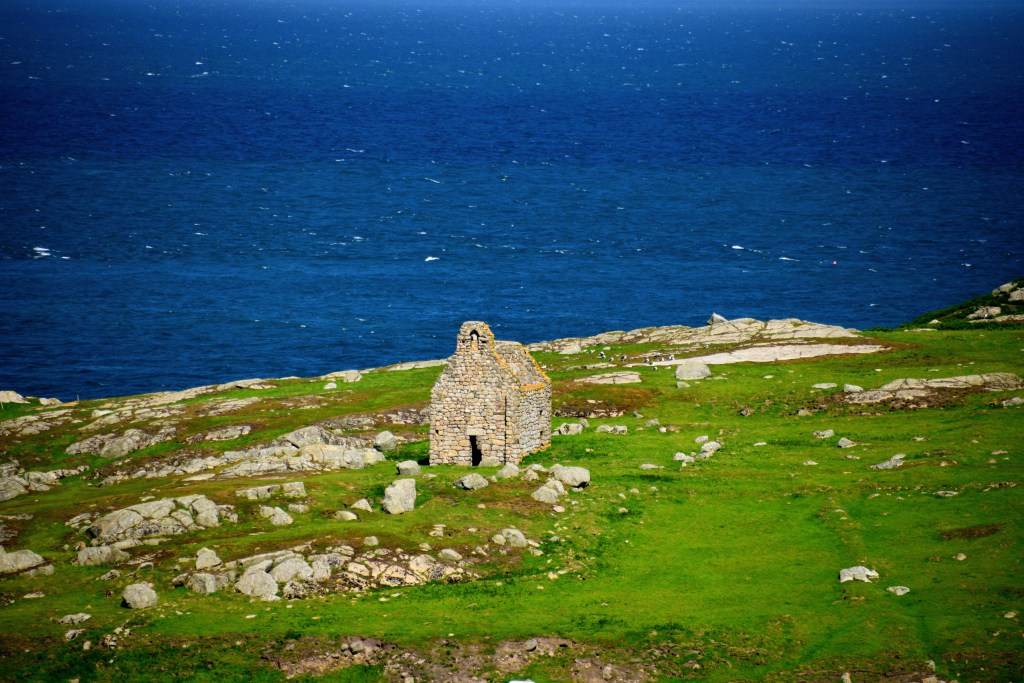
If you look out beyond the island, you’ll see rocks known as the Muglins. The beacon, looking like a little lighthouse, was fitted in the 19th century following complaints that the rocks were a problem for ships approaching the city.


Dillon’s Park is just across the road from Sorrento park. It stretches down to the water and offers more great views of the island.


Coliemore Harbour was built in the 1860’s with Dalkey granite. This is where you’ll catch your boat trip to the island with Ken the Ferryman.
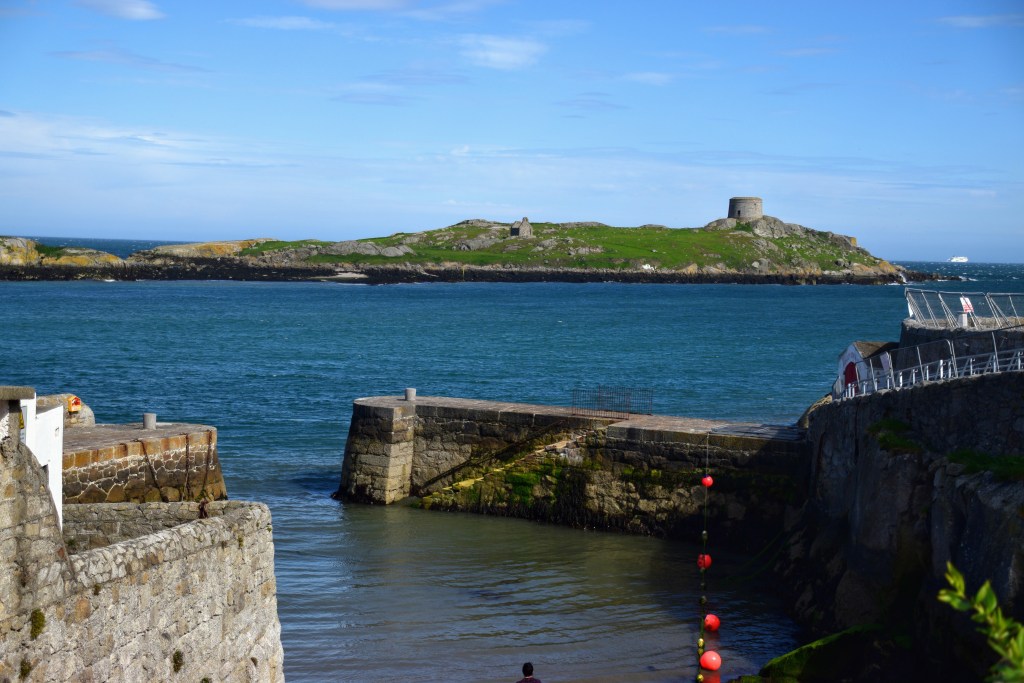

More apartments – once the site of the Coliemore Hotel – overlooking the harbour and sound – gorgeous…
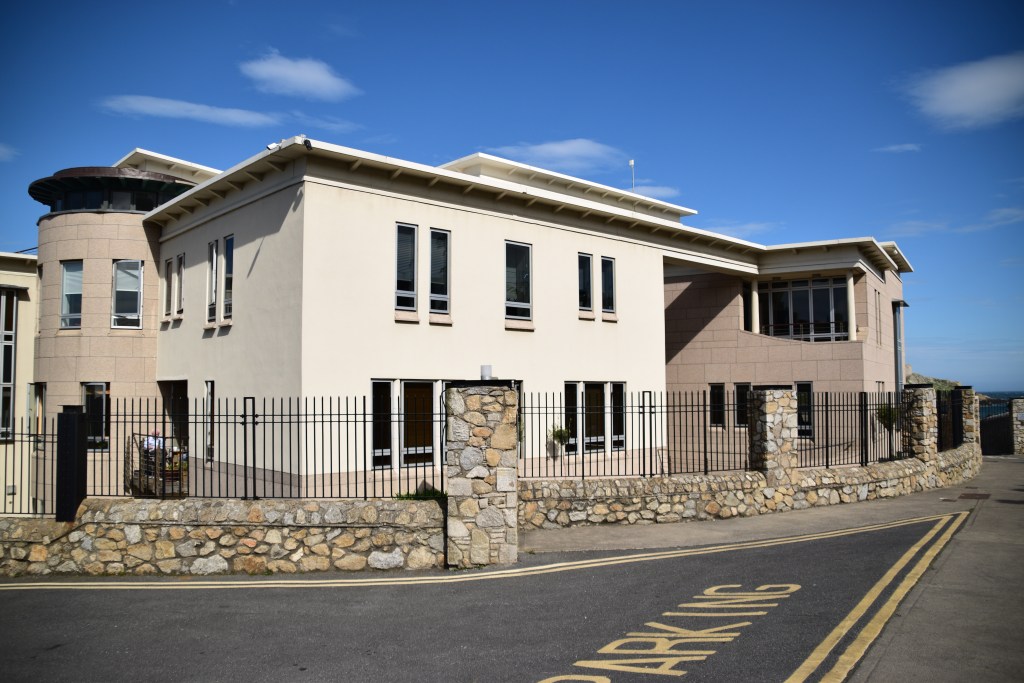
….and another one close by… this was Cliff Castle Hotel…..
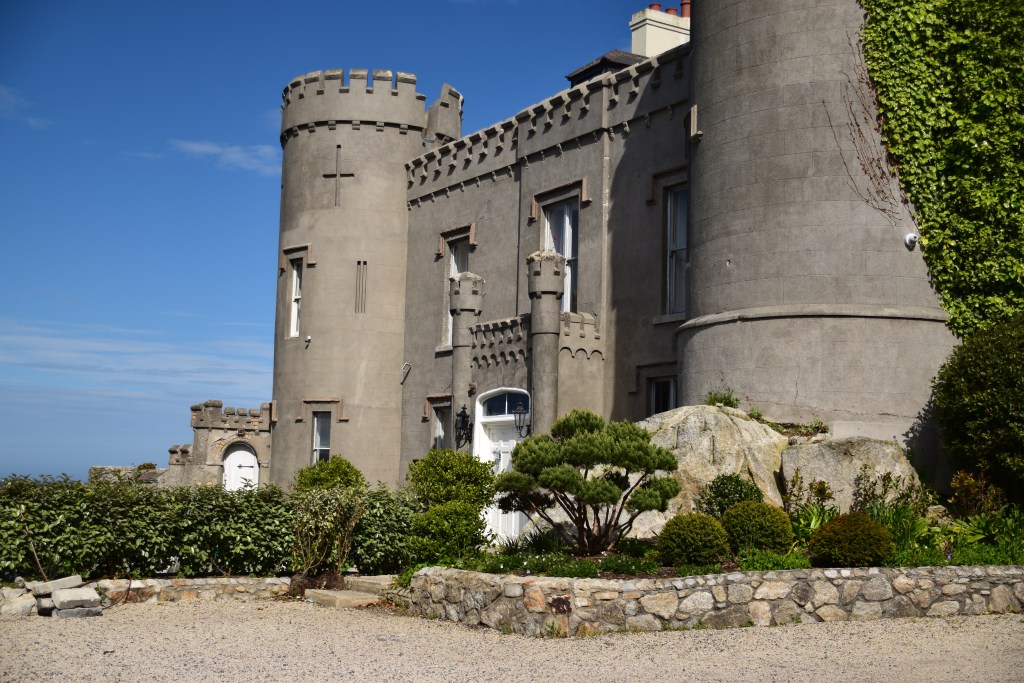
Coliemore Road is ranked among the most exclusive addresses in the country.
This is Bullock Harbour, long ago owned by the Cistercian monks. They also owned the local fishing rights and Bullock Castle was built in the 12th century to protect this lucrative business. The castle also served as an inn for travellers landing in Dalkey. For over 400 years the monks ruled the harbour and were well known for their hospitality. They lost it all with Henry VIII’s dissolution of the monasteries in 1539. The castle and its land were henceforth leased out to supporters of the crown.

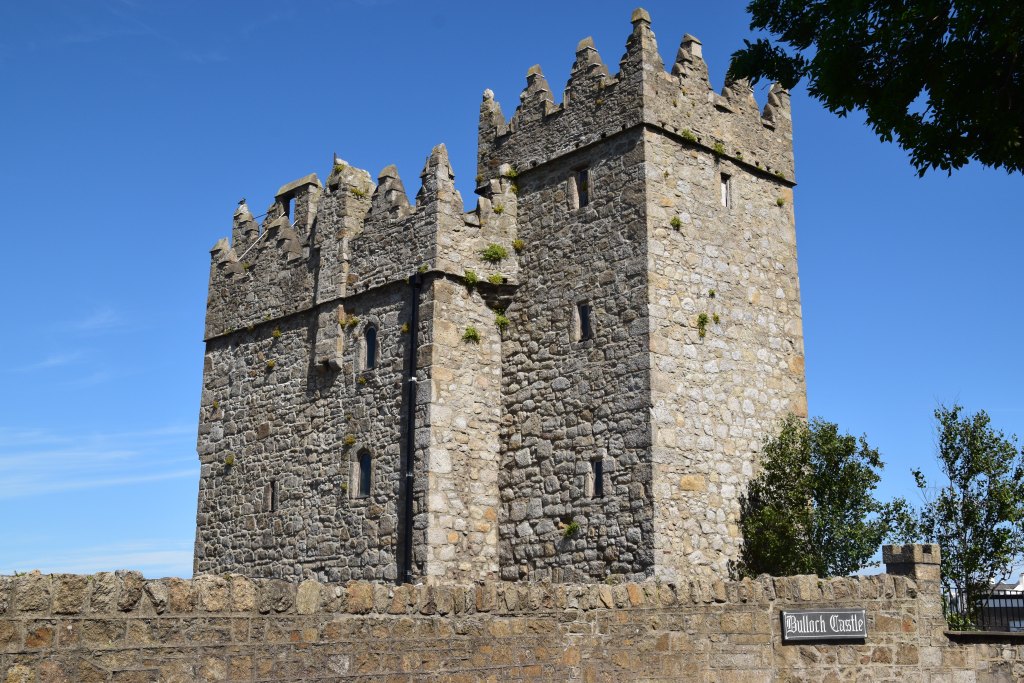
Bulloch was a base for pilots – known as hobblers – who guided ships across the treacherous sandbank into Dublin port. Around 1897, a few cottages were built along the pier to house the hobblers.

The Shangri-La, located up behind the pier, was yet another hotel knocked and replaced by luxury apartments.
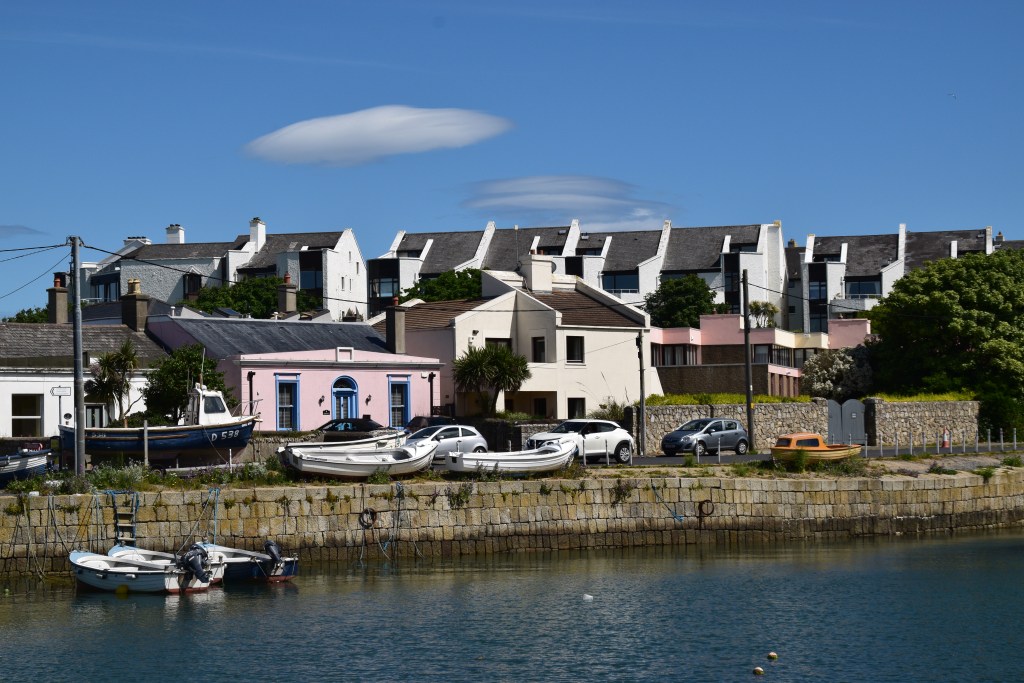
Back in town, you’ve earned your break! Dalkey is great place for lunch, an early-bird, pub grub or fine dining. You won’t find McDonald’s or KFC – there are no fast food chains in town. Needless to say, with its coastal location, seafood is high on most menus – mussels and oysters are commonplace, or perhaps you’d prefer a smoked salmon open sandwich with your pint…..
….and remember to keep your eyes peeled for those celebs – you never know who’ll walk by!
Postscript!
We’ve had 5 fine walks on Dublin bay:
Dalkey
All 5 are within 30 minutes of the city centre using public transport. Just imagine the wonderful week you could have in Dublin!
I hope you make it here one day!








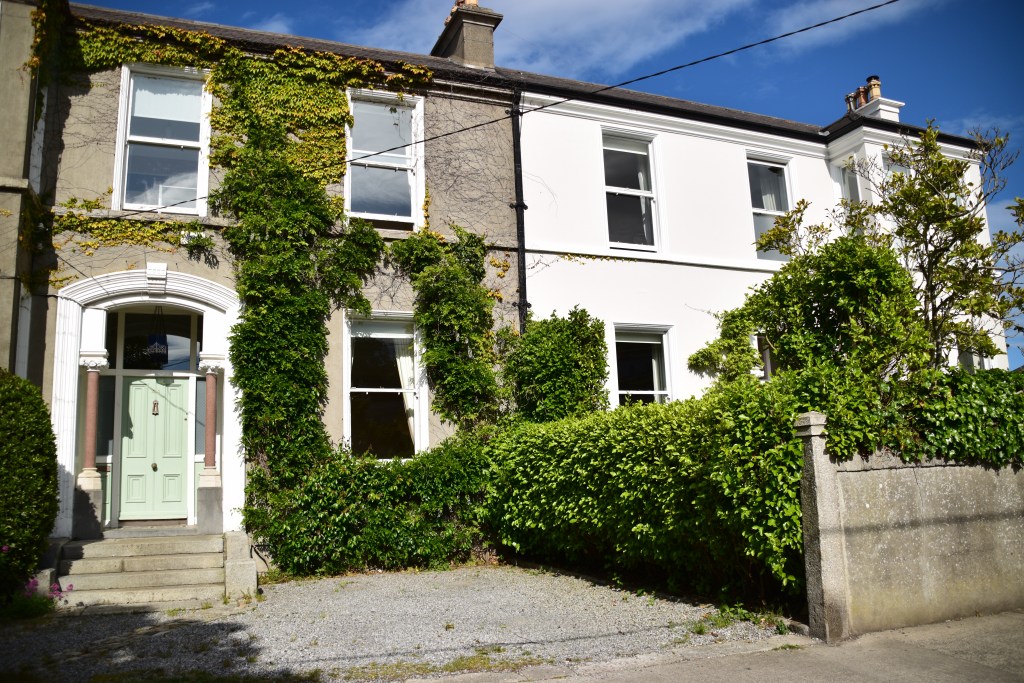



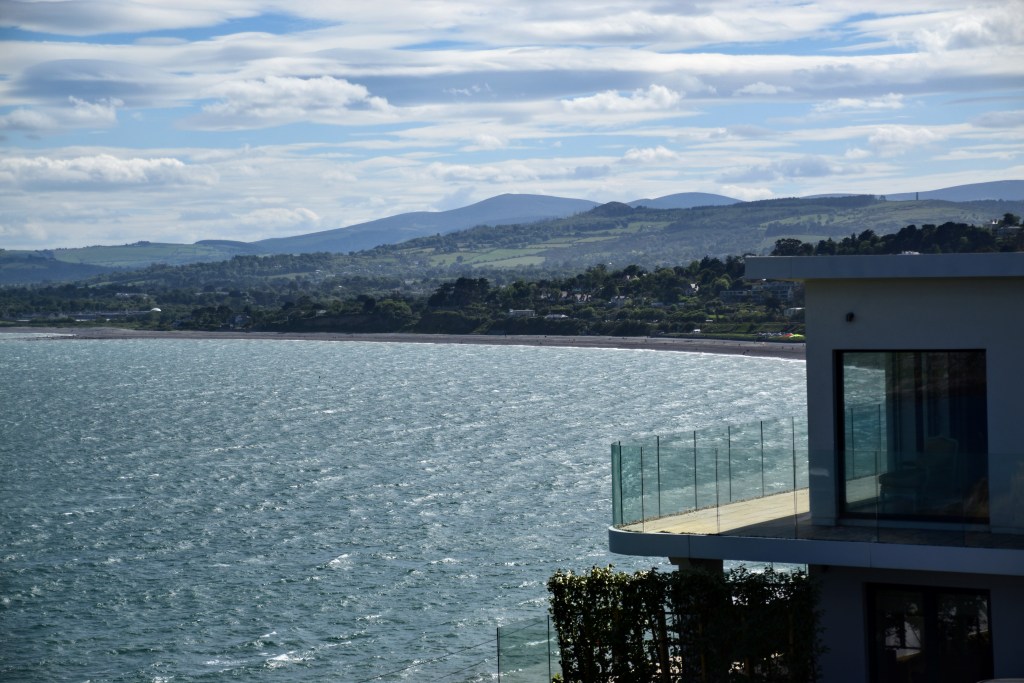














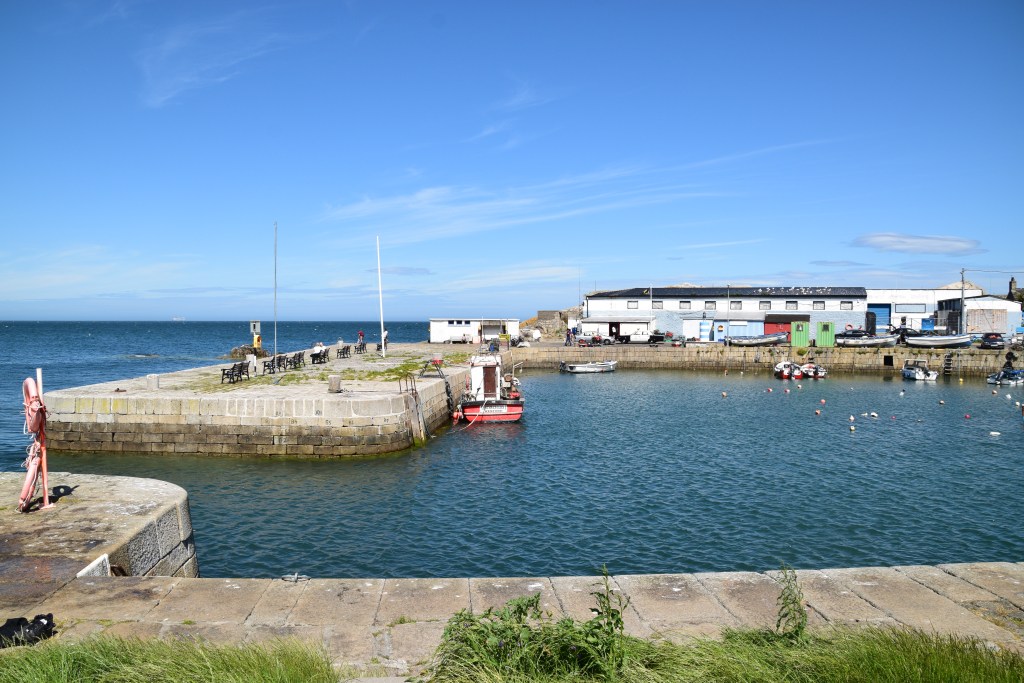


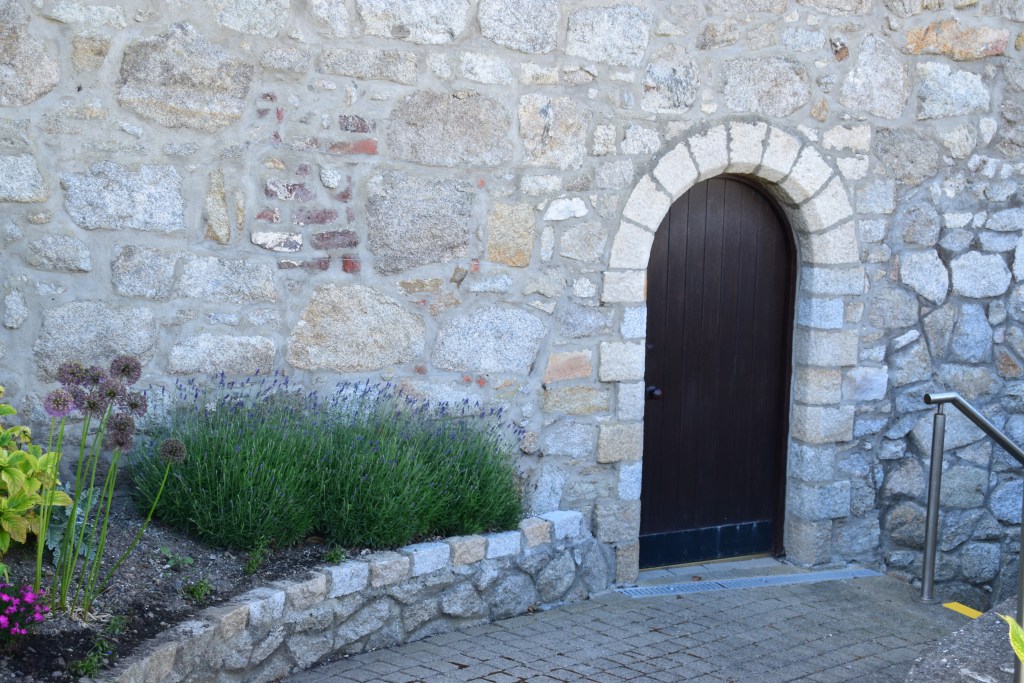




That is great to place visit. Very historic..and so much to see and do. Thanks for sharing this. ANITA
Its a lovely part of the county – great for local walks and pubs but the locals are happy to share
Beautiful Dalkey Marie… you captured it’s allure 👍
https://www.nytimes.com/2020/04/22/arts/matt-damon-ireland-coronavirus.html
Well done for the link Tre….so Matt is determined to return!! Won’t do local business any harm that’s for sure!
Looks a great place to explore, when we visit Dublin will will aim to visit some of these places 😊
Hopefully I’ll read about it some day!!
Beautiful pictures and narratives. A lot to explore…..even if it will only be pictures for me. 🙂
Well I’m glad you can enjoy the area – even just through the pictures… XXXMarie
An interesting walk, as always, and with stunning coastal views! No wonder people who afford to choose to live here! I have never heard of St Begnet despite her connection to Northumbria – do you know whereabouts in the county her nunnery was? I really like that sculpture, Thus Daedalus Flew, and the little church on Dalkey Island 🙂
There’s mention in a few places that it was an island of the coast.
I like the little church also – I’ve actually never been on the island believe it or not – the boat is over and back these days and I can see people picnicking in the sunshine – I’d love to see the hill from the island so must venture over some time…
Thanks for this series of walks; I can’t wait to visit Dublin again but get out of the city centre this time
Hope you make it!
Another spectacular walk Marie One never thinks of going to Dublin for the hiking, but my mind has been changed. Thanks for taking us along the path. Allan
You’re not the only one…. Dublin hoteliers are very worried about this summer…. bookings are very low in the city – its very dependent on foreign visitors who aren’t coming. Very, very few domestic bookings – they are trying to get non Dubliners to come and stay but most people heading to the west. Even Irish people forget that there are beaches in Dublin – there’s everything here for a great outdoor family holiday –
Love the coastal and harbour pictures.
Thank you – glad you enjoyed! XXXMarie
Ooo I love it, especially Goat Castle. Thanks for sharing your walks Marie, they take me somewhere new 🙂
I need a holiday after all the walking!!!!
I’m wondering how many days it took to get all these lovely photos with blue skies! Surely these were shot over a few weeks, although my Dublin friends insist that they have the best weather in Ireland. I’m currently editing a book for a Dublin writer (one of the reasons I haven’t been blogging) and I’m fascinated by his tales of his early childhood in this area and in Tipperary. He left in the early 60s, travelled the world, made a fortune and is now back in Dublin happily retired with his childhood sweetheart. Next visit I shall follow some of your walks, but you have given me so many places to visit that I shall be touting a briefcase full of transcribed blogs to assist me!
Ha!! Just IMAGINE all the grey photos I have Mari😅 😂. You’re right – most have been very recent – I’m exhausted from all the walking!!! We’ve had a lovely stretch of weather here in Dublin … BUT…. guess who’s off to Mayo next week for her staycation – and guess what the forecast is like!!!😖
PS _ I didn’t realise you were still editing…
Not editing on an industrial scale. I only do so when asked to by someone I trust who won’t give me a ‘dud’ writer. I have only a few contacts left in the biz now and seldom get asked, if truth be told. I would still like to be doing travel writing but as my eye problems mean that I can’t meet deadlines easily (and these get shorter and shorter as advertising dries up) it was putting me under a lot of stress and I thought maybe it was time to pack it in. So I, more or less, did. Occasionally I get an idea on an anniversary and whip something up but that’s it. I’ve got one on the stocks for the Tennessee Williams Anniversary in March, 2022 and I shall start pitching this in about November this year – if no one wants it, you might see it on here as a blog! Meantime, I’ve gone back to short story writing but I only enter competitions with them, I can’t write what they are looking for these days, I’m a bit too literary!
Enjoy Mayo, it might not be as bad as you think. It certainly couldn’t be any worse than yesterday when I was on top of a hill with glorious views over the island, but the rain was torrential and the wind whipped all the umbrellas inside out and the hill was a cemetery and I was at a funeral. I was never, ever, as cold and wet as I was yesterday. We stood there a full 20 minutes and then it was about 15 minutes walk back to the car. When I got home it was strip off, hot shower, whack the heating up and a hot toddy!
I’ve a vision of you Mari -sitting there editing all our blogs in your head every day!!!😖 I’m just thinking of all the grammar and structural clangers that must drive you mad!! 😅 😂
As for your optimism re Mayo – its not looking great – but hopefully better than your experience yesterday (although many’s the summer’s day we’ve spent here in similar conditions!!!)
Gorgeous shots & great info, Thanks for sharing, Marie! 🌞
Thank you Lisa – glad you enjoyed….. XXXMarie
Dalkey reminds me of an afternoon when I joined a group of friends who were keen to go to the pub in Dalkey. Why there? I had no idea. There were about ten of us around a large table and suddenly the conversations stopped, the murmuring and the sideways glances began. Behind me, Bono had just sat down at another table with two friends. In those days phones were neither tea machines nor cameras. I was the only one with a camera. Pressure from my friends. I refused to bother the singer and left without taking any pictures. Thanks for the trip back in time.
Isn’t it great for someone with a high profile to do something as ordinary as visiting a pub and be left alone… The selfie era has changed things a bit all right but in general, celebs can still have a relatively normal life here…
It also seems very Irish to me, at least at that time. I also met the Taoiseach on New Year’s Eve in “his” pub. This time there is a photo 🙂
Isn’t it great that even the leader of the country has a ‘local’!!!
Marie,
I have really enjoyed your trips around Dublin. Your blogs are full of fascinating insights and information. I get a sense of a new venture in the offing , maybe a booklet called a walkers guide to coastal Dublin or even guided tours of the various areas.
I would highly recommend a visit to Dalkey Island. Ciara and I went seakayaking to the Island on a beautiful sunny Sunday last year. We arrived back for a picnic in Bullock Harbour with the grandchildren in the campervan.
Ah thanks Bar – I’ll use you as a reference when the powers that be come knocking!!!
I don’t know why we’ve never been across…. must look into it next month. That could be a tough enough paddle I’d say – depending on currents and winds… I reckon we’ll just get the ferryman to bring us!!!!
Great post and fantastic photos, Marie 🙂 I love Dalkey’s rich history, beautiful Killiney Hill, a 10th-century church and its two Norman castles right on the main street. It’s also perfect for a day trip from nearby local areas and it’s the perfect place to escape the city and indulge in a little of what the coast has to offer. Thanks for sharing and have a nice day 🙂 Aiva xxx
Thank You Aiva..It’s another lovely part of the bay… I wouldn’t know Howth / Dollymount terribly well but it was only when I was writing about Dun Laoghaire and Dalkey and putting everything together that I realised how much we take for granted … we’ve so much on our doorstep here but no longer ‘see’ it when driving through it every other day…
Another terrific post. The casual day visitor wouldn’t see a tenth of the places of interest. The rise and decline of the
quarry is a story in itself – as are those of our Jersey quarries of which only a couple remain out of 70-ish. Sadly I never got to visit Dalkey.
A lot of visitors to Dalkey tend to stay in the village and just eat or drink. There’s decent enough parking on Killiney Hill so it gets visiting Dubs at the weekend but mostly locals during the week … The quarry is so overgrown now that you could walk through it and not even realise that anything was ever removed… Its a nice part of the city… XXXMarie
Would love to visit some day!
Hope you make it some time!!! XXXMarie